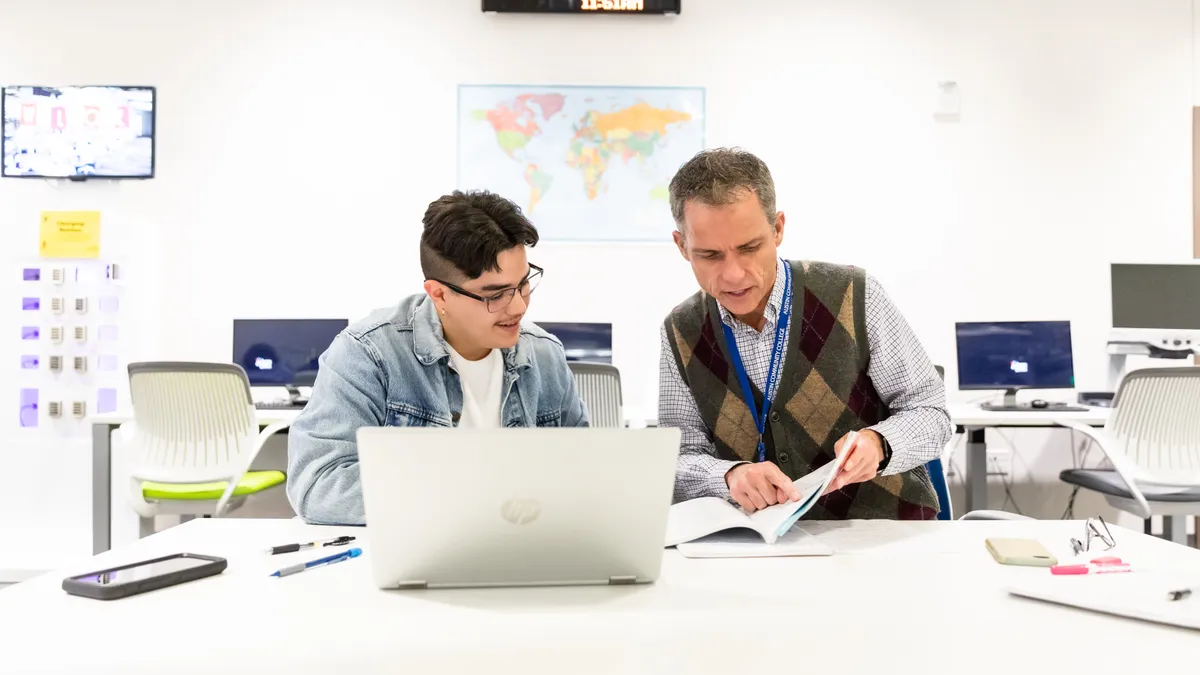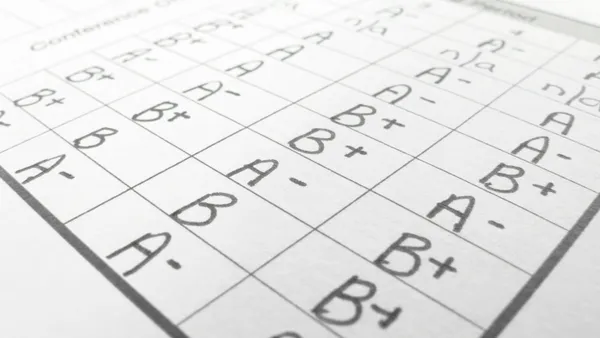Dive Brief:
- Equal-access tutoring is emerging as an equity-based solution to correct pandemic-related learning loss, District Administration reports, noting the practice is considered an effective intervention and can be scaled nationally, but is currently only widely available to those who can afford private tutoring.
- The first step in implementing a permanent tutoring system is to add 30 minutes to the school day, which would allow tutors to work with groups of two to four students. Older students would tutor younger students, and college students could become tutors as a work-study job.
- Providing tutoring to the students in the nation's 20,000 lowest performing schools would cost the federal government about $10 billion a year, though some municipalities have already invested in this type of intervention. Los Angeles Unified School District, for example, is paying teachers to tutor students outside of school, and Maryland has allocated $100 million to its tutoring programs.
Dive Insight:
Preliminary studies are showing while learning losses have not been as steep as expected due to COVID-19 school closures, student growth in math has still been stunted by the pandemic. Researchers also warn learning losses could be steeper for the students who didn't show up for testing, which was almost one in four.
High-dosage tutoring (HDT), which embeds tutoring for all students into the school day, is one model gaining traction. It is personalized, with specific student-to-tutor ratios of less than three-to-one. A recent study found tutor-student ratios of more than one to three provide little benefit. The HDT method is most successful when focusing on math, an area where learning loss from school closures is expected to be steep.
In 2010, the Houston Independent School District launched a 250-person tutoring team at nine schools. The district was selective when it came to the tutors, only hiring 25% of applicants and firing those who were "a bad match for the program." Administrators walked around the groups to observe the interactions. The model can be adapted to distance learning requirements if schools remain closed or if they need to re-close.
Approximately 12 states have implemented in-school, small group tutoring. But the lessons need to closely align with curriculum in order for them to be effective. Research shows the AmeriCorps-staffed Minnesota Reading Corps program boosted higher-risk students' reading levels by up to about one year.
Embedding tutoring into the school day also eliminates one of the issues that have long been cited as plaguing this intervention: elitism. Early in the pandemic, educators worried the rise of private tutoring would further exacerbate inequity in education. One-on-one and small-group tutoring is an effective learning intervention that could be afforded to do the students who need it most but often can't afford it themselves.







 Dive Awards
Dive Awards






